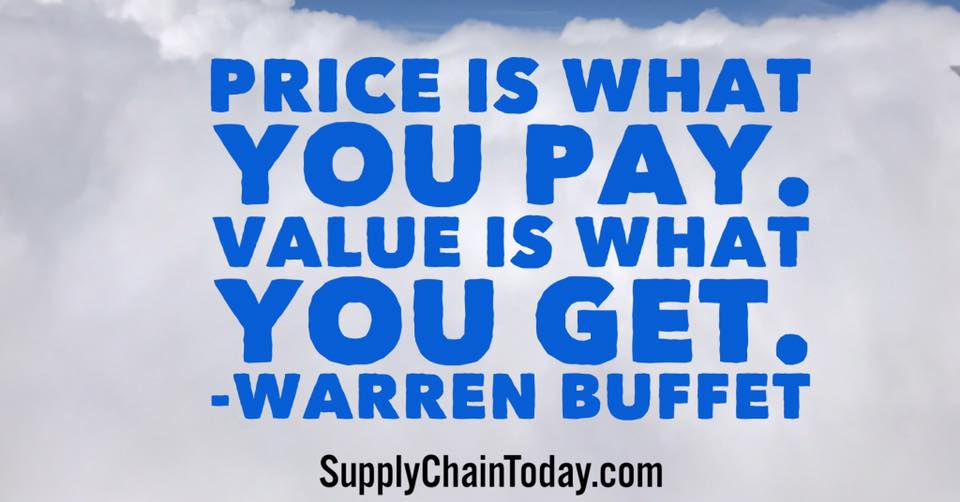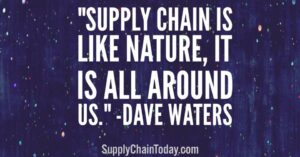Procurement is the process of acquiring goods, services, or works from an external source, usually through a competitive bidding process. It involves identifying the needs of an organization, sourcing potential suppliers, negotiating terms and prices, and selecting a supplier to provide the required goods or services. Procurement is an important function for organizations, as it helps ensure that they are able to acquire the goods and services they need to operate effectively, at the best possible price.
The procurement process typically involves several steps, including:
- Identifying the need: The first step in the procurement process is to identify the goods or services that an organization needs. This may involve conducting a needs assessment to determine the specific requirements of the organization.
- Sourcing suppliers: Once the needs of the organization have been identified, the next step is to identify potential suppliers who can provide the required goods or services. This may involve researching suppliers, gathering quotes, and comparing the offerings of different suppliers.
- Negotiating terms and prices: Once potential suppliers have been identified, the procurement process involves negotiating terms and prices with them. This may include discussing payment terms, delivery schedules, and any other terms and conditions that are relevant to the transaction.
- Selecting a supplier: After negotiations are complete, the organization will select a supplier to provide the required goods or services. This may involve evaluating proposals from multiple suppliers and selecting the one that best meets the needs of the organization.
Advantages and Disadvantages of Procurement
There are a number of potential advantages to using a procurement process, including:
- Cost savings: One of the main benefits of procurement is the ability to secure goods and services at the best possible price. By sourcing multiple quotes and negotiating terms and prices with potential suppliers, organizations can reduce their costs and improve their bottom line.
- Quality control: The procurement process can also help organizations ensure that they are acquiring goods and services of a high quality. By setting clear requirements and evaluating proposals from multiple suppliers, organizations can select a supplier that meets their quality standards.
- Risk management: Procurement can also help organizations manage risk by establishing clear terms and conditions for the acquisition of goods and services. This can help reduce the risk of disputes or misunderstandings with suppliers.
- Improved efficiency: By streamlining the process of acquiring goods and services, procurement can help organizations save time and improve their overall efficiency.
There are also some potential drawbacks to using a procurement process, including:
- Complexity: The procurement process can be complex and time-consuming, requiring significant investment in resources and expertise.
- Risk of bias: The procurement process may also be subject to bias, either intentionally or unintentionally, which can affect the fairness of the selection process.
- Limited flexibility: The procurement process can also be inflexible, making it difficult for organizations to respond quickly to changing needs or circumstances.
- Supplier relations: Finally, the procurement process may have an impact on the relationship between an organization and its suppliers. If the process is perceived as unfair or cumbersome, it may damage the relationship between the two parties.
Cost Savings: Procurement
There are a number of ways in which a procurement process can help organizations save costs. Some examples include:
- Competitive bidding: By soliciting quotes from multiple suppliers and negotiating terms and prices, organizations can secure the best possible deal for the goods and services they need. This can lead to significant cost savings, particularly if there is competition among suppliers for the business.
- Volume discounts: Procurement can also help organizations secure volume discounts from suppliers, which can lead to cost savings. For example, if an organization is able to negotiate a bulk discount on a large order, it can reduce the per-unit cost of the goods or services it is acquiring.
- Improved efficiency: By streamlining the process of acquiring goods and services, procurement can help organizations save time and improve their overall efficiency. This can lead to cost savings through reduced labor costs and improved productivity.
- Risk management: Procurement can also help organizations manage risk by establishing clear terms and conditions for the acquisition of goods and services. This can help reduce the risk of disputes or misunderstandings with suppliers, which can save on legal and other costs.
This video explains “What is procurement” in a simplified manner.
[embedded content]
Procurement and Supply Chain Training
Negotiation and Purchasing Quotes
- “One of the best way so persuade others is by listening to them.” ~Dean Rusk.
- “A well trained procurement organization can add major dollars to the organization through cost savings.” ~Dave Waters
- “Organizational Procurement is a tight balancing act between “cost and quality” on one side and “time and compliance” on the other side, yet a seasoned procurement specialist keeps it evenly balanced.” ~Victor Manan Nyambala
- “The freedom of the city is not negotiable. We cannot negotiate with those who say, “What’s mine is mine and what’s yours is negotiable.” ~ John F. Kennedy
- “You must never try to make all the money that’s in a deal. Let the other fellow make some money too, because if you have a reputation for always making all the money, you won’t have many deals.” ~ J. Paul Getty
- “Those in supply chain know the impossible is possible.” ~Dave Waters
- “Let us never negotiate out of fear. But, let us never fear to negotiate.” ~ John F. Kennedy
- “A sign that negotiations were handled well on both sides is that everybody probably feels a little bit like they didn’t get what they wanted.” ~ Christopher Lloyd
- “If a company isn’t continuously improving then it is slowly dying.” ~Dave Waters
Train by Primary SCM Process

#wpdevar_comment_1 span,#wpdevar_comment_1 iframe{width:100% !important;} #wpdevar_comment_1 iframe{max-height: 100% !important;}
- SEO Powered Content & PR Distribution. Get Amplified Today.
- PlatoData.Network Vertical Generative Ai. Empower Yourself. Access Here.
- PlatoAiStream. Web3 Intelligence. Knowledge Amplified. Access Here.
- PlatoESG. Carbon, CleanTech, Energy, Environment, Solar, Waste Management. Access Here.
- PlatoHealth. Biotech and Clinical Trials Intelligence. Access Here.
- Source: https://www.supplychaintoday.com/what-is-procurement-procurement-process/
- :is
- :not
- 385
- a
- ability
- Able
- acquire
- acquiring
- acquisition
- Act
- add
- advantages
- affect
- After
- All
- also
- always
- among
- an
- and
- any
- ARE
- AS
- assessment
- At
- balancing
- BE
- because
- been
- benefits
- BEST
- between
- bias
- Bit
- both
- Both Sides
- Bottom
- business
- but
- by
- CAN
- cannot
- chain
- changing
- circumstances
- City
- clear
- company
- comparing
- competition
- competitive
- complete
- complex
- conditions
- conducting
- content
- continuously
- control
- Cost
- cost savings
- Costs
- cumbersome
- damage
- deal
- Deals
- delivery
- Determine
- different
- difficult
- Discount
- discounts
- discussing
- disputes
- dollars
- drawbacks
- Dying
- effectively
- efficiency
- either
- embedded
- ensure
- establishing
- evaluating
- evenly
- everybody
- example
- examples
- expertise
- Explains
- external
- fairness
- fear
- fellow
- Finally
- First
- Flexibility
- For
- Freedom
- from
- function
- gathering
- get
- goods
- Have
- help
- helps
- High
- HTTPS
- identified
- identify
- identifying
- if
- Impact
- important
- impossible
- improve
- improved
- improving
- in
- include
- Including
- intentionally
- investment
- involve
- involves
- IT
- ITS
- jpg
- Know
- labor
- large
- lead
- Legal
- let
- like
- Line
- Listening
- little
- Main
- major
- make
- Making
- manage
- management
- manner
- many
- max-width
- May..
- Meets
- mine
- money
- multiple
- must
- Need
- needs
- negotiations
- never
- next
- number
- of
- Offerings
- on
- once
- ONE
- operate
- or
- order
- organization
- organizations
- Other
- Others
- out
- overall
- particularly
- parties
- Paul
- payment
- perceived
- plato
- Plato Data Intelligence
- PlatoData
- player
- possible
- potential
- price
- Prices
- primary
- probably
- process
- procurement
- procurement process
- productivity
- Proposals
- provide
- purchasing
- quality
- quickly
- quotes
- reduce
- Reduced
- relations
- relationship
- relevant
- reputation
- required
- Requirements
- Resources
- Respond
- Risk
- Save
- Savings
- say
- seasoned
- secure
- selecting
- selection
- Services
- setting
- several
- side
- Sides
- sign
- significant
- simplified
- Slowly
- So
- some
- Source
- Sourcing
- span
- specialist
- specific
- standards
- Step
- Steps
- streamlining
- subject
- supplier
- suppliers
- supply
- supply chain
- terms
- terms and conditions
- that
- The
- their
- Them
- then
- There.
- they
- this
- those
- Through
- time
- time-consuming
- to
- too
- trained
- transaction
- try
- two
- typically
- unfair
- us
- using
- usually
- Video
- volume
- wanted
- Way..
- ways
- we
- WELL
- were
- What
- What is
- which
- WHO
- will
- with
- works
- yet
- you
- youtube
- zephyrnet












